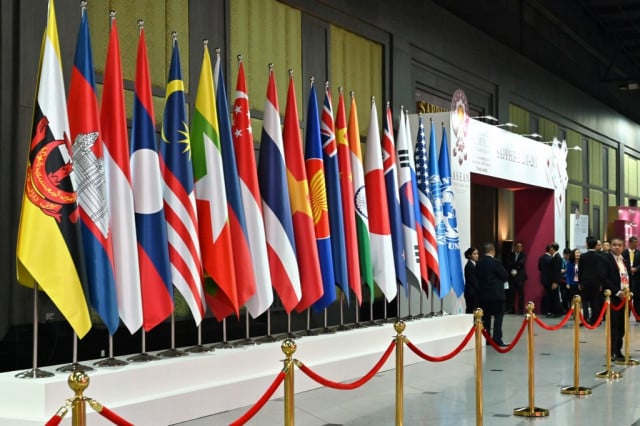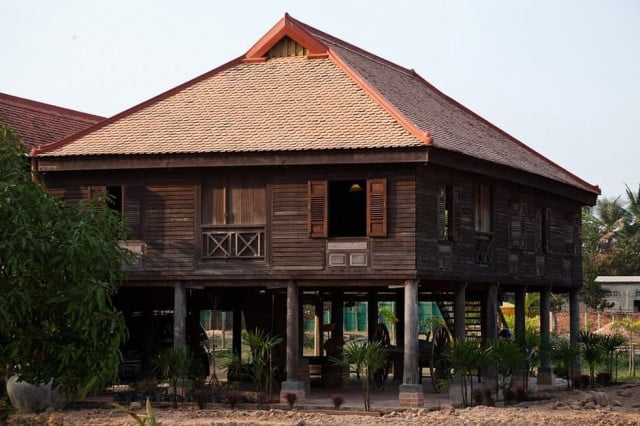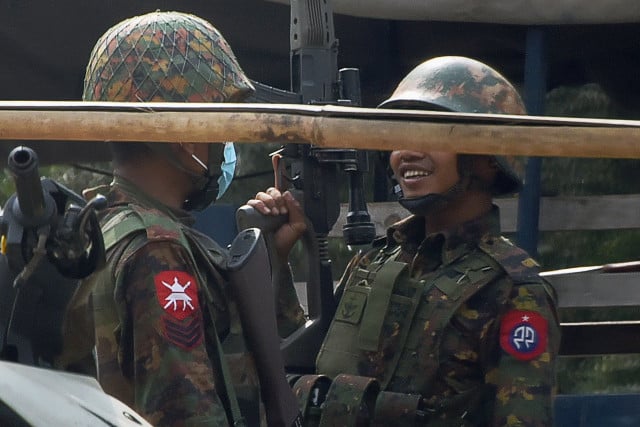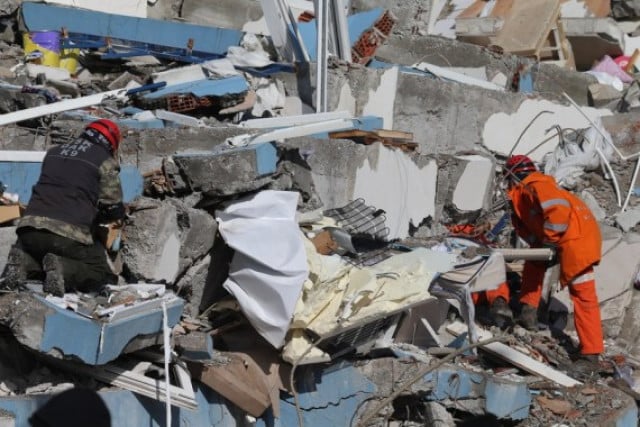ASEAN at 53: Key Challenges and the Way Forward

- Kimkong Heng
- August 8, 2020 7:47 AM
The Association of Southeast Asian Nations (ASEAN) was established on 8 August 1967 in Bangkok by the five original member countries, which consisted of Indonesia, Malaysia, the Philippines, Singapore, and Thailand. Brunei joined in 1984, Vietnam in 1995, Laos and Myanmar in 1997, and Cambodia in 1999.
The aims and purposes for the establishment of ASEAN are: (1) to accelerate economic growth, social progress and cultural development; (2) to promote regional peace and stability; (3) to promote active collaboration and mutual assistance on matters of common interest; (4) to provide assistance to each other in the form of training and research facilities; (5) to collaborate more effectively for the greater utilization of agriculture and industries, and the expansion of trade; (6) to promote Southeast Asian studies; and (7) to maintain close and beneficial cooperation with existing international and regional organizations that have similar aims and purposes.
According to its official website, ASEAN operates under six fundamental principles: (1) mutual respect for independence, sovereignty and territorial integrity; (2) freedom from external interference; (3) non-interference in member countries’ internal affairs; (4) settlement of differences or disputes in a peaceful manner; (5) renunciation of threats or use of force; and (6) cooperation. The Association has established the ASEAN Community comprising of three pillars: the ASEAN Political-Security Community, the ASEAN Economic Community, and the ASEAN Socio-Cultural Community.
Having successfully journeyed through numerous domestic, regional and global challenges, ASEAN turns 53 years old this year. This short article attempts to provide a summary of key challenges facing contemporary ASEAN and explore the way forward for this regional grouping to enhance its relevance and significance amidst the uncertainties caused by geopolitical tensions, ongoing strategic competition between major powers, and the COVID-19 pandemic.
Key challenges
Although ASEAN has been hailed for its extraordinary achievements in facilitating and fostering regional and global peace, there are many challenges this grouping has to overcome. According to Kishore Mahbubani and Jeffery Sng, authors of The ASEAN Miracle: A Catalyst for Peace, one of the challenges faced by ASEAN lies in its own weaknesses. Unlike the European Union, ASEAN has no custodian responsible for keeping this 10-nation bloc going. The association lacks strong institutions to ensure the success of the implementation of its collective decisions. ASEAN also faces a challenge regarding its citizens’ lack of ownership of the grouping.
ASEAN, Mahbubani and Sng argue, faces three main threats. The first is the strategic rivalry for influence in the Asia Pacific between the United States and China. Recently, ASEAN has been forced to choose sides. Specifically, ASEAN countries including Cambodia are facing increasing geopolitical challenges as the US and China intensify their strategic competition and engage in a new Cold War. ASEAN could be destabilized or even destroyed if it plays this geopolitical game ineffectively.
Second, ASEAN lacks strong, committed leaders who can tackle various ASEAN challenges. Most leaders in ASEAN are busy dealing with their domestic challenges including political, social, and economic issues. Given the profound impact of COVID-19, each ASEAN leader will prioritize his own domestic affairs, especially stimulating economic recovery during and after the pandemic. The focus on domestic affairs will obviously impact the successes and wellbeing of ASEAN as a whole.
Third, ASEAN is vulnerable to internal and external conflicts. Internally, border issues between Cambodia and Thailand and between Cambodia and Vietnam still remain and may unexpectedly flare up in the future. Border disputes between Thailand and Myanmar may be amplified by illegal immigration and ethic insurgency at any point. The Malaysia-Singapore border can also cause problems, especially as regards the disputes concerning territorial waters in the Johor Strait, close to Singapore’s reclaimed land area. Externally, there are huge challenges regarding the territorial disputes in the South China Sea (SCS).
The World Economic Forum has published an article which argues that ASEAN is facing seven key challenges as the grouping tries to achieve sustainable economic growth. They include: territorial disputes, corruption, changing demographics, economic disparities, inequalities in technology adoption and global economic integration.
There also are challenges concerning upcoming elections and governance, the rise of authoritarianism in the region, ASEAN’s relevance, its trade dependence on China, the decline in the US engagement, and the Rohingya crisis in Myanmar. In addition, at least four countries in ASEAN are facing key challenges caused by water politics. The Mekong River or “Mother of Water” that flows through five ASEAN states—Myanmar, Laos, Thailand, Cambodia, and Vietnam—is figuratively dying. More hydropower dams are being constructed, creating more obstructions to the flow of water and fish migration, damaging biodiversity and the environment, and affecting the lives and livelihoods of people in the riparian countries.
The way forward
To move forward and achieve sustainable development, Mahbubani and Sng recommend, ASEAN must cultivate and improve a greater sense of ownership of ASEAN among the people in the region. Courses on ASEAN studies should be integrated into school curricula from primary school to university. ASEAN must also improve the dynamics of the ASEAN secretariat. It may revise its policy on equal funding and follow the practice of the United Nations, that is, wealthier nations contribute more, not equal, funding to support the organization. Also, greater efforts should be made to sustain and enhance ASEAN’s existing achievements. The association has the potential to be a new beacon of hope for the world; thus, it is vital that ASEAN promote its strengths.
Moreover, ASEAN must find innovative ways to address a number of major challenges mentioned earlier. It must try to promote closer coordination, reduce corruption, encourage transparency, support research and innovation, and foster creativity and entrepreneurship. More importantly, ASEAN countries must work closely together to improve healthcare, education, economic integration, infrastructure development and connectivity. The bloc must prioritize democratic values, the rule of law, inclusive growth and sustainable development. It needs to pay closer attention to the development of digital economy in the region by supporting and helping each other, especially the less developed members, to improve technology transfer and adoption.
As to the COVID-19 pandemic, ASEAN must work collaboratively and act collectively rather than respond to COVID-19 individually. As Pou Sothirak, executive director of the Cambodian Institute for Cooperation and Peace, has argued, there is no time for ASEAN members to self-isolate. Instead, the bloc should promote a regional response to the pandemic. Retreating into “isolationism, nationalism and protectionism” will not help ASEAN effectively weather the COVID-19 storm and the economic slowdown caused by the pandemic. Adopting regionalism and genuinely working together are therefore key to the collective fight against COVID-19.
To address the issues related to dams along the Mekong River and climate change that exacerbates the situation, ASEAN, and especially the Mekong River countries, must enhance coordination and inter-institutional cooperation, expand regional engagement, and improve access to information and hydrographic data. Concerned ASEAN countries must try to strike a fine balance between commercial gains and environmental protection as regards the Mekong River. Most importantly, ASEAN must treat the Mekong issues with seriousness and urgency. Dealing with China individually may not be a viable option given China’s size, influence and power. The way forward with this issue rests in the hands of the Mekong riparian states. These countries must collaborate, step up, and lobby ASEAN to pay more attention to the Mekong issues in ways the bloc views the South China Sea issues.
Regarding the South China Sea issues, ASEAN must approach the disputes with collective interests in mind. The ASEAN claimant states should not force the non-claimant states to take sides or get involved in the disputes, which may jeopardize ASEAN unity and damage bilateral and multilateral relations with China—ASEAN’s top trading partner. Instead, both ASEAN claimant and non-clamant states must resolve their differences and find common ground that prioritizes ASEAN interests, unity, and centrality. In opposing China’s territorial claims, both bilateral and multilateral mechanisms should be pursued. As some analysts have argued, “a united Southeast Asian front would be difficult for Beijing to divide and conquer.”
Thus, the best way forward is for ASEAN to stay united and resilient while trying to promote respect of international law and a rules-based maritime order. Given the disparities in size, economic strength, military power, and influence between China and each ASEAN claimant state along with the diverging interests among ASEAN members, the SCS issues will continue to be a major challenge facing ASEAN. The bloc must enhance its “Unity in Diversity,” constructively engage China as well as the US, and work toward the conclusion of the highly anticipated SCS Code of Conduct.
Kimkong Heng, a recipient of the Australia Awards Scholarship, is a PhD candidate at the University of Queensland. He is also a Visiting Senior Fellow at the Cambodian Institute for Cooperation and Peace and a founding co-editor of Cambodian Education Forum. All views expressed are his own.















